Occupational Safety Training for Screen Protector Manufacturing
99,000 ₫
Note: The above price is calculated per person and may vary depending on the number of trainees participating in the course and market fluctuations. For more accurate pricing support, please refer to the pricing list or contact our consulting staff directly.
Occupational safety is an important issue in screen protector manufacturing plants and needs to be addressed promptly to ensure the health and safety of workers and enhance the reputation of businesses. The Occupational Safety Training is one of the effective solutions to raise awareness on how to prevent occupational accidents for workers involved in screen protector production.
Table of Contents
Toggle1. Overview of Screen Protectors
a. What is a Screen Protector?
A screen protector is a thin protective layer placed on the surface of electronic device screens such as mobile phones, tablets, and laptops. The main purpose of a screen protector is to shield the screen from scratches, dust, and to reduce the risk of breaking when the device is impacted or dropped.

b. Machinery for Screen Protector Production
1. Laminating Machine
The laminating machine is an important device in creating the protective layer for screen protectors, especially for tempered glass and hydrogel protectors.
- Function: Applies the protective film layer onto the surface of the screen protector to increase durability and scratch resistance.
- Features: Uses pressure and heat to firmly bond the material layers together.
2. CNC Cutting Machine
The CNC (Computer Numerical Control) cutting machine is programmed to cut materials with high precision.
- Function: Cuts screen protectors to the desired size and shape.
- Features: High accuracy, capable of cutting complex shapes, suitable for both small-scale and mass production.
3. UV Printing Machine
The UV printing machine uses ultraviolet technology to print images and patterns onto the surface of screen protectors.
- Function: Prints designs, logos, or decorative patterns on the protectors.
- Features: Ink dries quickly under UV light, producing sharp and durable images.
4. Vacuum Laminating Machine
Vacuum laminating machines are primarily used in the production process of tempered glass screen protectors.
- Function: Laminates the protector onto the screen in a vacuum environment to remove air bubbles and ensure strong adhesion.
- Features: Ensures the protector is bubble-free and firmly attached to the screen.
5. Hardness Testing Machine
Hardness testers are used to evaluate the hardness and scratch resistance of screen protectors, especially tempered glass.
- Function: Measures the hardness of the protector to ensure quality standards are met.
- Features: Often uses the Mohs scale to assess scratch resistance.
6. Thickness Gauge
Thickness gauges are used to check the thickness of the protectors after production, ensuring uniformity and compliance with standards.
- Function: Accurately measures the thickness of the protector.
- Features: Can measure very thin thicknesses, suitable for various types of protectors.
7. Transparency Tester
Transparency testers assess the optical quality of the protector, ensuring it does not reduce screen clarity.
- Function: Measures transparency and light transmission of the protector.
- Features: Ensures the protector does not affect the display quality of the screen.

c. Common Types of Screen Protectors
- Plastic (PET) Protectors
- Features: Made from polyethylene terephthalate (PET), a common plastic used in screen protection products.
- Advantages: Affordable, easy to apply, does not affect image quality.
- Disadvantages: Offers less protection compared to other types, easily scratched and less durable.
- Tempered Glass Protectors
- Features: Made from tempered glass, offering much better scratch and impact resistance than plastic protectors.
- Advantages: High durability, smooth touch feel, better screen protection.
- Disadvantages: Higher cost, thicker which may change the user experience.
- Hydrogel Protectors
- Features: Made from a flexible and softer material compared to PET and tempered glass, often self-heals minor scratches.
- Advantages: Comprehensive protection, especially good for curved screens.
- Disadvantages: Expensive, difficult to apply precisely, less durable than tempered glass.
- Matte (Anti-Glare) Protectors
- Features: Have a matte surface to reduce glare from light.
- Advantages: Minimizes reflections and glare, suitable for users frequently using devices outdoors.
- Disadvantages: May reduce image sharpness, touch feels less smooth than tempered glass.

d. Specific Jobs in a Screen Protector Manufacturing Plant
Group 1
- CEO, Deputy CEO, department heads in the screen protector manufacturing plant.
Group 2
- Safety officers: manage safety in the plant, design safety procedures, supervise and enforce employees to comply with safe working processes.
Group 3
- Laminating machine operators: Operate and monitor laminating machines to apply protective layers on screen protectors. Adjust parameters like temperature and pressure to ensure product quality.
- CNC cutting machine operators: Program and operate CNC cutting machines to cut protectors to desired sizes and shapes. Ensure high accuracy during cutting.
- UV printing machine operators: Operate UV printers to print images, logos, or decorative patterns on protectors. Ensure quick ink drying and sharp images.
- Vacuum laminating machine operators: Operate vacuum laminating machines to laminate protectors onto screens in a vacuum environment, remove air bubbles, and ensure firm adhesion.
Group 4
- Office work, support, sales, marketing.
- Production management, quality control, human resources management, materials management, finance and accounting management.
- Research and development of new products, packaging design.
2. Overview of Occupational Safety Training for Screen Protector Production
In this article, we focus on issues related to Group 3 because Group 3 directly participates in the production process and faces the highest occupational safety risks. For reference on other groups, see here.
a. What is Group 3 Occupational Safety Training?
- Group 3 occupational safety training consists of sessions that equip workers with awareness and methods to prevent workplace accidents.
- The training helps workers identify and avoid hazards, minimizing risks of workplace accidents during their work.
REGISTER FOR OCCUPATIONAL SAFETY TRAINING SERVICE
b. Training Duration
Initial safety training duration
- Total training time is at least 24 hours, including testing time.
- 8 hours of theory on policies and laws on occupational safety and hygiene
- 8 hours of theory on basic knowledge of occupational safety and hygiene
- 4 hours of theory on specialized training content
- 2 hours of practical training on specialized content
- 2 hours of theoretical testing at the end of the training course
The safety training center will schedule the training into multiple sessions depending on the worker’s availability. Usually, there are 6 sessions, the course lasts 3 days, provided the production company arranges continuous training time.
Periodic safety training duration
- Before the occupational safety card expires, workers who want to renew must undergo periodic occupational safety training, with training time being at least 50% of the initial training time.
Explanation: total periodic safety training time is at least 12 hours, including testing time. After completing the periodic training and passing the test, workers will be reissued or have their occupational safety card extended.
c. Training Content
| No. | TRAINING CONTENT | TRAINING DURATION (HOURS) | |||
| Total | Including | ||||
| Theory | Practice | Test | |||
| I | Policies and Laws on Occupational Safety and Hygiene | 8 | 8 | 0 | 0 |
| 1 | Overview of the legal documents system on occupational safety and hygiene. | 6 | 6 | ||
| 2 | System of standards and technical regulations on occupational safety and hygiene. | 1 | 1 | ||
| 3 | Specific regulations from state management agencies on occupational safety and hygiene when building, expanding, or renovating facilities for production, use, storage, and inspection of machines, equipment, materials, and substances with strict occupational safety and hygiene requirements. | 1 | 1 | ||
| II | Basic Knowledge of Occupational Safety and Hygiene | 8 | 8 | 0 | 0 |
| 1 | Basic knowledge of hazardous and harmful factors in the workplace. | 4 | 4 | ||
| 2 | Methods to improve working conditions. | 1 | 1 | ||
| 3 | Safety culture in production and business. | 1 | 1 | ||
| 4 | Rights and obligations of employers and employees; policies and regimes on occupational safety and hygiene for employees; roles and tasks of safety and hygiene networks and officers. | 1 | 1 | ||
| 5 | Safety and hygiene rules, safety signs and instructions, use of safety equipment and personal protective equipment; first aid skills, occupational accident prevention, occupational disease prevention. | 1 | 1 | ||
| III | Specialized Training Content | 6 | 4 | 2 | 0 |
| Comprehensive knowledge of machines, equipment, substances producing hazardous factors; analysis, evaluation, and risk management in occupational safety and hygiene; safe working procedures with machines, equipment, and substances with strict occupational safety and hygiene requirements. | 6 | 4 | 2 | ||
| IV | Safety Training Final Assessment | 2 | 2 | 0 | 0 |
| Total | 24 | 22 | 2 | ||
See more training contents of the 6 groups
d. Occupational Safety Card
After completing the occupational safety training and passing the test, workers will be issued an occupational safety card (commonly called the occupational safety certificate for Group 3).
The Group 3 safety card clearly shows information such as name, date of birth, job, and specific working environment. It also includes training duration, a red stamp, and a signature confirming course completion.
According to the safety card issuance regulations stated in Clause 2 of Article 24 of Decree 44/2016/ND-CP, there are two cases:
- If the employer and employee have a labor contract, the employer must sign, stamp, and endorse the safety card for the trained Group 3 employee after completing the training and passing the test.
- If the worker is freelance or seasonal without a labor contract, the training unit must sign, stamp, and endorse the safety card after the worker completes the training and passes the test.

3. Identifying Hazards Affecting Workers in Screen Protector Manufacturing
- Machinery hazards: Workers may get caught in laminating machines, CNC cutting machines, vacuum pressing machines, or other machinery.
- Chemical risks: Solvents, adhesives, and chemicals used in the production process may cause skin, eye, or respiratory irritation.
- Risks from dust and debris: Cutting and processing the protectors can generate dust and small debris, which can harm respiratory health and potentially injure skin and eyes.
- Risks from heat and pressure: Laminating and vacuum pressing machines often operate at high temperatures and pressures, which can cause burns or injuries upon contact.
- Electrical hazards: Machinery and equipment in the factory use electricity, posing a risk of electric shock.
- Ergonomic risks: Repetitive tasks or improper working postures can cause muscle fatigue, back and neck pain, and musculoskeletal disorders.
- Noise hazards: Noise from machines and equipment may damage workers’ hearing.

4. Safety Measures When Participating in Screen Protector Production
Safety When Using Machinery
- Training and Guidance:
- Train workers on safe operation of machines such as laminating machines, CNC cutting machines, and vacuum pressing machines.
- Instruct on how to use emergency stop buttons and other safety devices.
- Personal Protective Equipment (PPE):
- Provide and require the use of gloves, safety glasses, and safety shoes when working with machinery.
- Use appropriate protective clothing to avoid being caught in machinery.
- Maintenance and Regular Inspection:
- Perform regular maintenance and inspection of machinery to ensure safe and efficient operation.
- Immediately fix technical issues and maintain safety devices such as emergency stop buttons.
Chemical Safety
- Use of Personal Protective Equipment (PPE):
- Use chemical-resistant gloves, safety glasses, and chemical filtering masks when working with solvents, adhesives, and other chemicals.
- Ventilation and Air Control:
- Ensure the workspace has a good ventilation system to minimize the concentration of chemical vapors in the air.
- Use chemical fume hoods when working with volatile substances.
- Chemical Handling Training:
- Train workers on safe handling and storage of chemicals.
- Provide information on chemical hazards and first aid measures in case of exposure.
Temperature and Pressure Safety
- Use of Personal Protective Equipment (PPE):
- Use heat-resistant gloves when working with laminating and vacuum pressing machines.
- Ensure workers wear heat-resistant protective clothing if necessary.
- Warnings and Signage:
- Mark areas with high temperature risks and place warning signs to remind workers.
Electrical Safety
- Training and Guidance:
- Train workers on electrical safety and emergency response to electrical incidents.
- Inspection and Maintenance:
- Conduct regular inspections of electrical systems and devices to detect and promptly fix issues.
- Use of Electrical Safety Devices:
- Use safety devices such as automatic circuit breakers and shock-resistant sockets.
Dust and Debris Safety
- Dust Extraction and Air Filtration Systems:
- Install dust extraction and air filtration systems in cutting and processing areas to reduce dust and small debris in the air.
- Use of Personal Protective Equipment (PPE):
- Require workers to wear masks and safety glasses to protect respiratory system and eyes from dust and debris.
Work Posture Safety
- Training on Proper Work Posture:
- Train workers on correct working postures to reduce risks of back, neck pain and musculoskeletal problems.
- Support Equipment:
- Provide supportive equipment such as ergonomic chairs and anti-fatigue mats to improve working conditions.
- Encourage Rest and Exercise:
- Encourage workers to do stretching exercises and take regular breaks to avoid muscle fatigue.
Noise Safety
- Noise Control:
- Measure and control noise levels in the factory to ensure they do not exceed safety thresholds.
- Use of Hearing Protection:
- Provide and require use of protective headphones or earplugs when working in high-noise environments.
Occupational Safety and Health (OSH) Management
- Develop Safety Policies:
- Develop and implement clear and specific occupational safety and health policies.
- Monitoring and Evaluation:
- Regularly monitor and evaluate safety activities in the factory to ensure compliance with safety regulations.
- Encourage Reporting and Improvement:
- Encourage workers to report safety hazards and participate in occupational safety improvement activities.
- Periodically conduct work environment monitoring in factories to collect and analyze harmful factors affecting workers, then adjust to reduce hazards to prevent occupational diseases.
5. Benefits of Occupational Safety Training for Screen Protector Production
An Toàn Nam Việt provides your enterprise with the following great benefits after completing occupational safety training courses in accordance with Decree 44/2016/ND-CP on Occupational Safety and Hygiene work for companies, factories, and enterprises.
- Workers can recognize potential risks of workplace accidents and take preventive measures to avoid accidents.
- Your enterprise can establish risk prevention measures in production, operation, and maintenance processes.
- Reduce costs related to workplace safety incidents.
- Uninterrupted production process helps increase labor productivity and product quality.
- Comply fully with occupational safety laws to avoid legal risks.
- Create prestige and professionalism in all aspects, thereby elevating your enterprise’s brand.
Nam Việt’s training courses are solutions to prevent and combat external factors affecting individuals so they can avoid dangers that may lead to injuries or worse, death.
REGISTER FOR OCCUPATIONAL SAFETY TRAINING SERVICE
6. Customer Feedback After Completing Occupational Safety Training for Screen Protector Production
An Toàn Nam Việt has many years of experience accompanying numerous enterprises in Vietnam in general and in southern provinces in particular. This responsibility is invaluable to Nam Việt, which is why our Occupational Safety Training is increasingly professional. The motivation for An Toàn Nam Việt’s growth comes from both positive feedback and suggestions from businesses. Below are feedbacks from partners we have served.
Hoa Dat Construction and Trading Joint Stock Company
“Nam Việt’s service has helped us greatly in simplifying occupational safety and completing safety dossiers for the working process. The consulting team is enthusiastic and timely in answering our questions. 5 stars for Nam Việt.”
See more customer interview sessions after using An Toàn Nam Việt’s services
7. An Toàn Nam Việt’s Occupational Safety Training Capability
An Toàn Nam Việt is a reputable and quality occupational safety training center in Vietnam today. Our occupational safety training sessions are continuously held at manufacturing workshops, factories, or construction sites across the country (all 63 provinces of Vietnam).
REGISTER FOR OCCUPATIONAL SAFETY TRAINING SERVICE
Occupational Safety Training License
- An Toàn Nam Việt has been inspected and certified by the Safety Department of the Ministry of Labor – Invalids and Social Affairs for eligibility to conduct occupational safety and hygiene training. This further strengthens our capacity in occupational safety training.

Training Materials and Lectures
- Before training materials are introduced into occupational safety training courses, they are reviewed and approved to ensure accuracy and effectiveness when applied.
- Our instructors’ teaching methods are standardized according to An Toàn Nam Việt’s training standards, a method developed by occupational safety experts to maximize learners’ knowledge absorption.
Facilities
- Controlling classroom environmental factors that affect training improves teaching efficiency and knowledge retention.
- Our training support facilities are spacious and meet standards for area, lighting, training equipment, etc.
8. Nationwide Reputable Quality Safety Training Center
At An Toàn Nam Việt, we prioritize the professionalism of occupational safety training. For us, imparting knowledge for workers to protect themselves equips them with safety tools on their livelihood journey, contributing to nation-building.
To ensure effective training, we meticulously prepare everything, from tools, teaching equipment to curricula, documents, sound, and lighting.
Our occupational safety trainers are experts with many years of experience, even conducting research on hazard identification across industries and prevention methods.
Our instructors’ lectures are practical, vivid, and easy to understand for workers. These factors help learners feel comfortable and absorb knowledge effectively. The content always aligns with Decree 44/2016/ND-CP.
Thus, learners grasp many hazard prevention measures and how to protect themselves, applying them suitably in real work.
Our training center proudly provides reputable, professional occupational safety training services with the following advantages:
- Competitive training costs while maintaining quality.
- Flexible training schedules matching production conditions.
- Quick, legal-compliant procedures for occupational safety training certification.
- Experienced and seasoned instructors.
- Classrooms controlled for factors enhancing training efficiency and knowledge absorption.
- Training materials tailored to occupational safety at enterprises.
- An Toàn Nam Việt works dedicatedly and professionally to provide accurate and fast customer support.

9. Additional Reference Materials for Occupational Safety Training in Screen Protector Production
- Occupational Safety Materials for Screen Protector Production
- Occupational Safety Training Materials Set
- Occupational Safety Training Test Set
- Occupational Safety Training Curriculum for Screen Protector Production
- Occupational Safety Test for Screen Protector Production
No comments yet

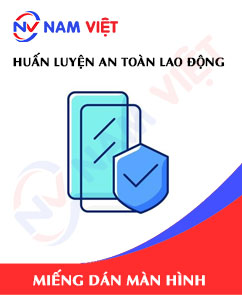
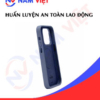
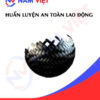



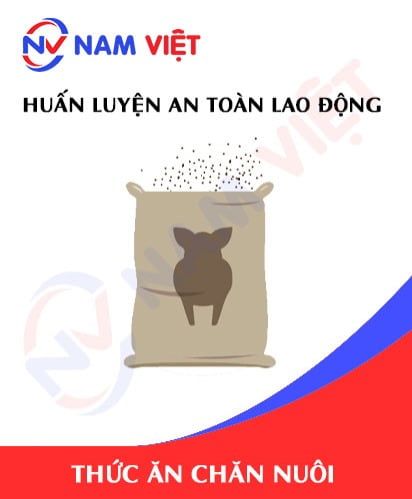
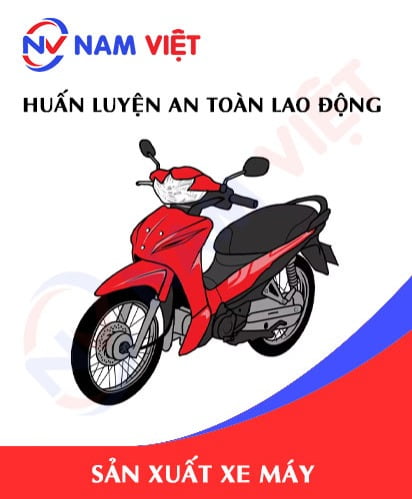
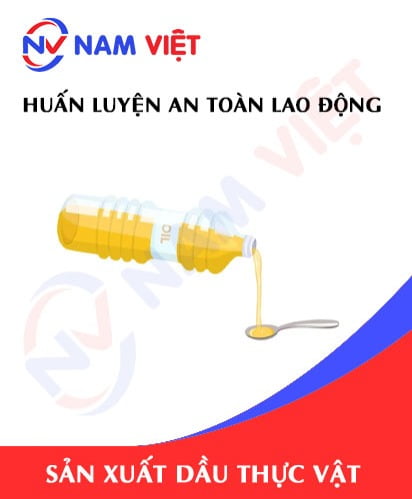
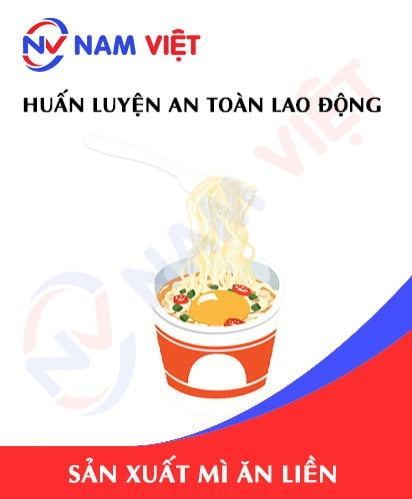
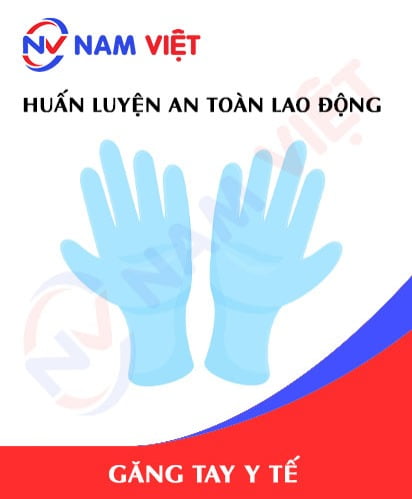
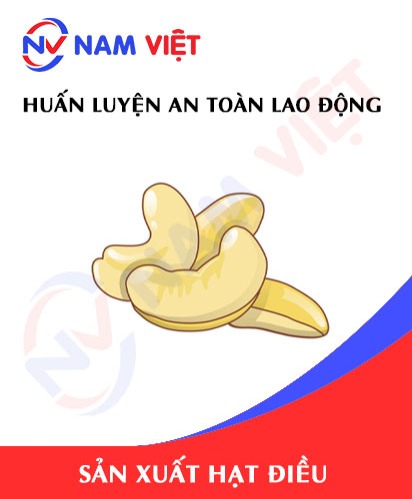
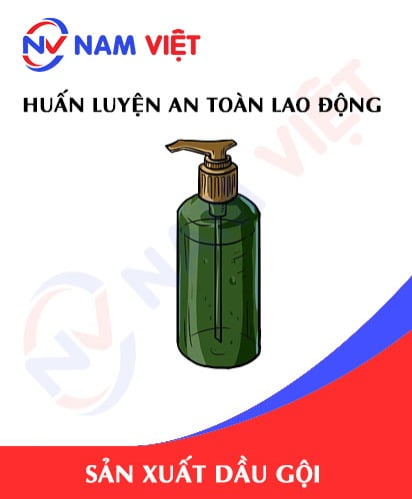
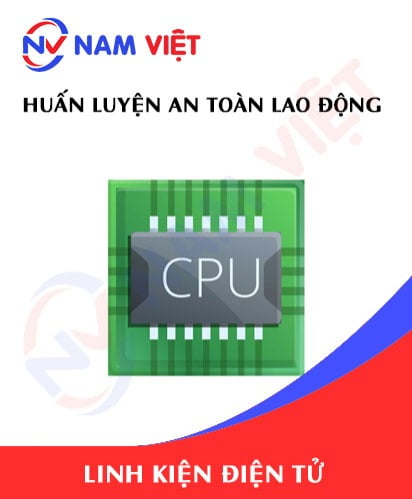
Review Occupational Safety Training for Screen Protector Manufacturing
There are no reviews yet.